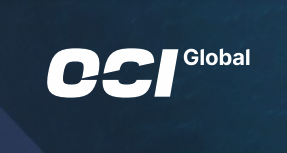OCI expects to garner a pricing premium for the blue ammonia produced at its 1.1 MTPA Texas Blue Ammonia facility, which is scheduled to reach commercial operations in early 2025.
Netherlands-based OCI broke ground last year on the project, touted by the company as the first greenfield blue ammonia facility of this scale to come online in the US and globally.
Carbon pricing and ammonia production curtailments in Europe are anticipated to generate premium pricing for the facility’s output.
“The implementation of the Carbon Border Adjustment Mechanism (CBAM) in the European Union in 2026 is expected to create a differential for ammonia prices, where low-carbon ammonia has an inherent advantage relative to grey ammonia,” CEO Ahmed El-Hoshy said on a call today.
“Given the forward [European Union Allowance] pricing” – the name for Europe’s emissions allowances – “this adds approximately at least another $100 per ton of returns net of freight for our blue ammonia from Texas going into Europe.”
Addressing a question about how OCI expects to price its product at a premium while a prospective competitor on the Gulf Coast is offering to sell its ammonia to a Japanese buyer using a cost-plus pricing model, Ahmed El-Hoshy noted the competitor’s offtake arrangement was still at the MoU stage and the project had not reached a final investment decision.
He added: “What is the cost, and what is the plus?”
In addition to sending the ammonia into the US Midwest and Gulf Coast markets, OCI plans to export to the Middle East and Europe, where the market has experienced ammonia production curtailments, Ahmed El-Hoshy said.
“We have effectively over the last 18 months had a 600,000 ton short for ammonia, and we know just given where marginal costs are, we’re going to start seeing more permanent shutdowns,” he added, referring to curtailments by CF Industries in the UK and BASF’s production cuts in Germany.
“To the extent you go into the European market, with CBAM that’s moving in the right direction, Europe is going to be pricing carbon from 2026,” he added, “and carbon today is EUR 100 per ton in the forward curve, and every ton of ammonia is about two tons of carbon, so it’s about a EUR 200 carbon charge that will start being implemented.”
“Structurally there will be an advantage to having something that ‘s a blue product versus something that’s a grey product in the market, and that can allow for the premium that we’re discussing here.”
In today’s presentation, OCI included an entire slide about the many announced but failed ammonia projects since 2008, noting only 11 projects from 35 announcements were built on time.









